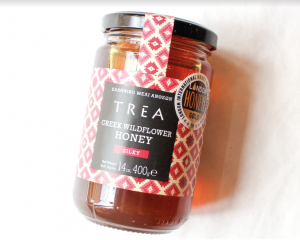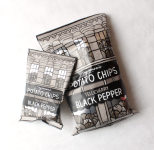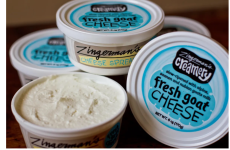Trea Wildflower Honey from Greece
A culinary gift from the island of Thasos
 Here’s an awesome way to lighten and brighten your day. Toast a slice of good bread from the Bakehouse—I’m really high right now on the True North. Pour on a bit of your favorite olive oil. Spread on some of the Creamery’s handmade Cream Cheese, or the fresh ricotta we get at the Cream Top shop from Bellwether Farms. Then spoon on some of this honey. “Heavenly” is an understatement. And, you can make the whole thing in about two minutes.
Here’s an awesome way to lighten and brighten your day. Toast a slice of good bread from the Bakehouse—I’m really high right now on the True North. Pour on a bit of your favorite olive oil. Spread on some of the Creamery’s handmade Cream Cheese, or the fresh ricotta we get at the Cream Top shop from Bellwether Farms. Then spoon on some of this honey. “Heavenly” is an understatement. And, you can make the whole thing in about two minutes.
While one can certainly live without high-quality varietal honey, life is lovelier with this bit of beauty added to it. I know that when times are tough, great honey is not inexpensive. But, a tiny bit of it goes a really long way. As luxuries go, it’s eminently affordable. And while it may not be inexpensive nowadays, back in history, it was essentially free for the taking. Anyone who was interested and willing and who lived near honeybees could go out and get it—check out this gorgeous film about a woman who gathers honey from hives of wild bees in what’s now known as North Macedonia. Beekeeping, by the way, is an interesting place for leadership insights—I wrote a whole essay on the parallels between good leadership and beekeeping. As Liubomir Stefanov, one of the filmmakers of “Honeykeepers,” said, “The point is to take as much as you need, not to take everything, and leave [something] for tomorrow and those who are providing for you.” I would say the same about business.
The Greek word for honey is “mele,” and Melissa means honeybee. Rob Waters writes, “Few countries love honey and revere beekeepers more than Greece, and perhaps no country has a deeper history in this craft.” It’s woven throughout Greek mythology and cooking. This wildflower honey is gathered by local producers who move their beehives to different places along the countryside, creating a unique honey. The hives are moved in the evening when the bees are asleep. The wildflower honey combines nectar from an array of blossoms, as well as the local pine trees, and gets the added influence of the salt from the sea. There are over 7,500 different species of plants found in Greece—nearly 900 of them are only in Greece. Because of their high levels of antioxidants, Greek honeys—in particular, this one from Thasos—are as good as the better-known Manuka honey from New Zealand when it comes to naturopathic healing. Best of all, the honey itself is delicious. Lightly butterscotchy, delicate, almondy, maybe a hint of cantaloupe even. It is a lovely clear, translucent amber in color. The honey is high in fructose, so it stays clear and flows naturally. And yet, it’s so thick that if you hold a spoonful of it straight up and down, it will still take a minute or two for the honey to drip off. It’s a bit like eating liquid ribbon candy. You almost have to chew it.
Eat it by the spoonful if you want a healthy sweet to snack on. Put it on toast or oatmeal. It’s really good on rice pudding, pancakes, waffles, or French toast. Great in coffee or tea too. Add a bit to your blintzes. As you might know already, honey and apples are a classic of the Eastern European Jewish New Year table—when you’re using some of the awesome apples that are out on the farmer’s market along with honey of this caliber, it’s a world class treat. And speaking of holidays, give some thought to using it to bake Greek Christmas honey biscuits—Melomakarona—scented with cinnamon and orange.




Zingerman’s Art for Sale